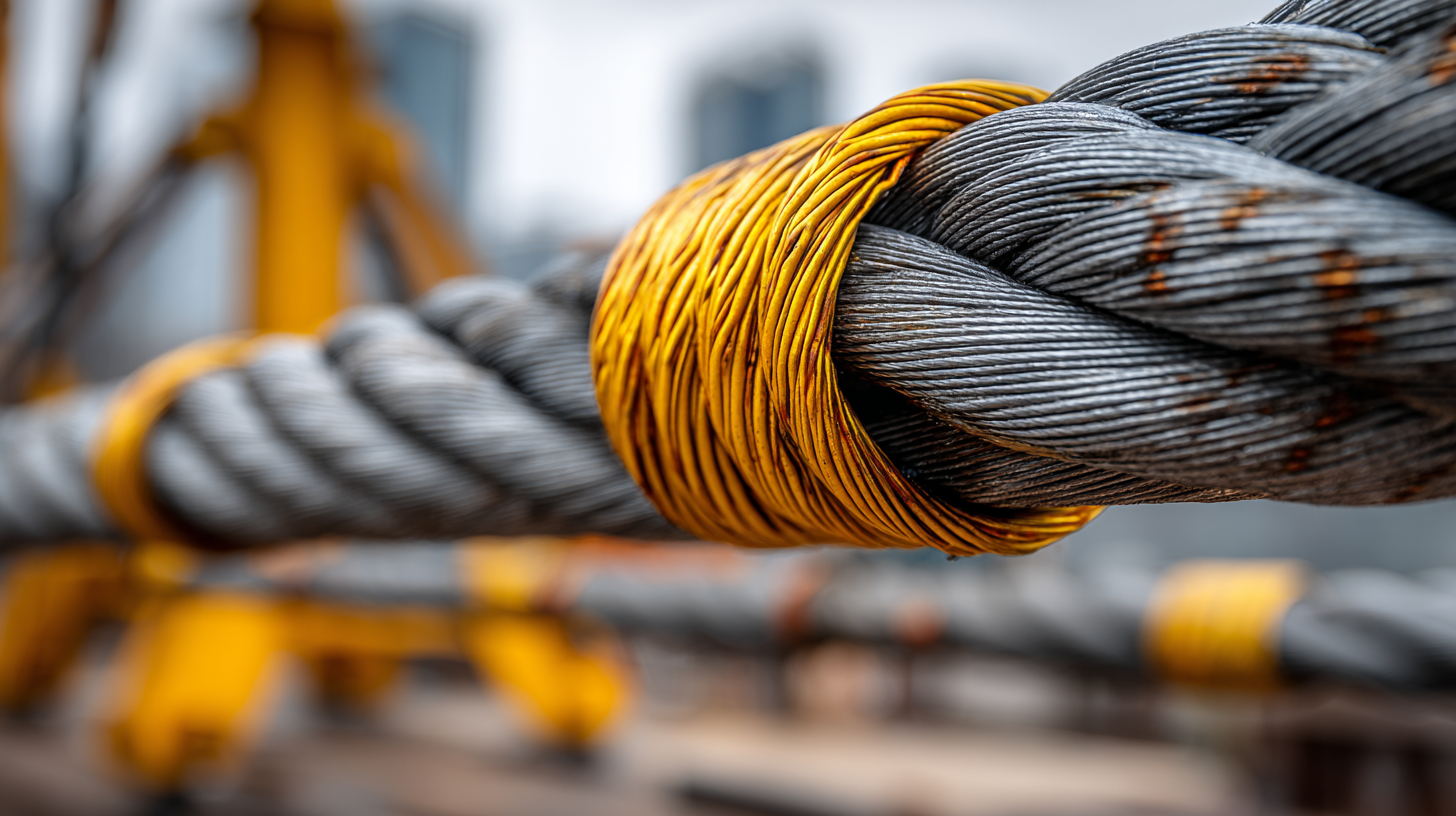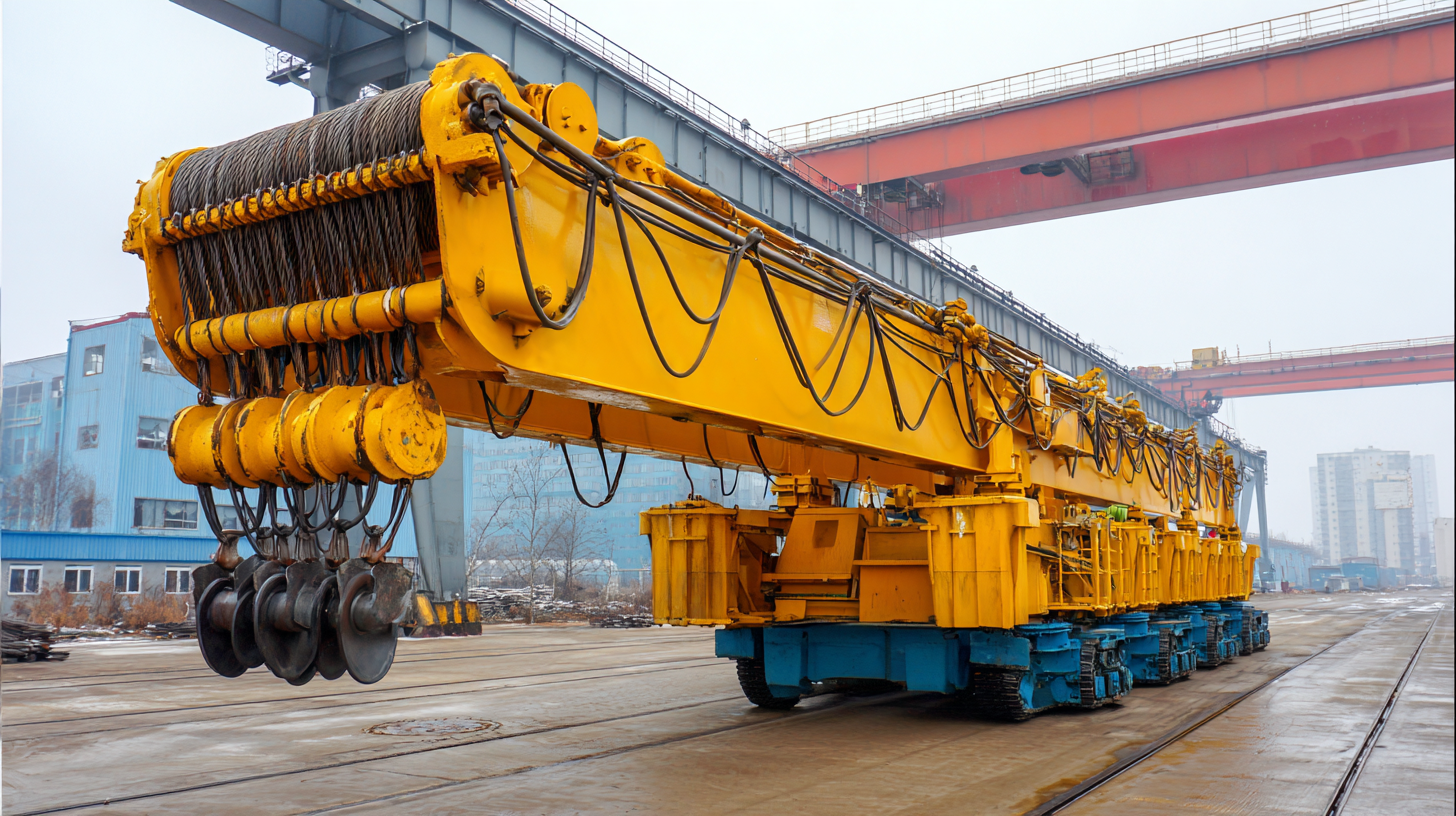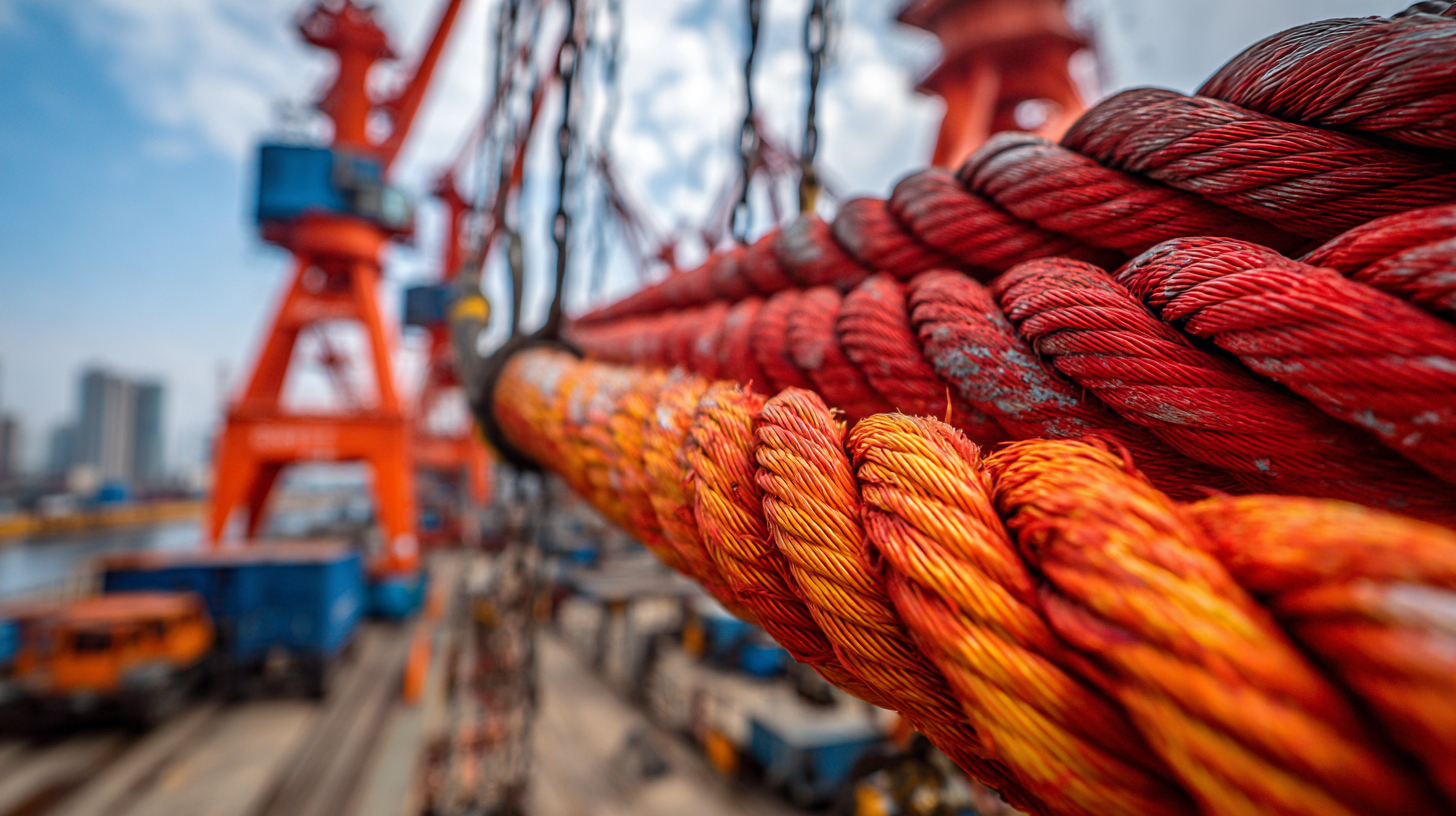Ultimate Guide to Selecting the Best Overhead Crane Wire Rope for Your Needs
In the ever-evolving landscape of material handling, the selection of an appropriate Overhead Crane Wire Rope is vital to ensuring operational efficiency and safety. According to the latest industry reports, the global overhead crane market is projected to grow at a CAGR of 4.5%, reaching approximately $4.5 billion by 2025. This growth underscores the increasing demand for high-quality lifting equipment, particularly in sectors such as manufacturing, construction, and logistics. The choice of wire rope directly impacts the performance and lifespan of overhead cranes, with factors such as load capacity, construction type, and environmental conditions playing crucial roles. Thus, understanding the intricacies of Overhead Crane Wire Rope selection is essential for businesses aiming to maximize productivity and maintain a competitive edge in the market.
Understanding Overhead Crane Wire Rope Standards and Specifications
When it comes to selecting the best overhead crane wire rope, understanding the standards and specifications is crucial for ensuring safety and efficiency in lifting operations. The American Society of Mechanical Engineers (ASME) and the Wire Rope Technical Board (WRTB) provide strict guidelines that govern wire rope manufacturing and usage. According to a recent industry report, adhering to these standards can reduce the risk of accidents by up to 60%, emphasizing the importance of compliance in crane operations.
Wire rope specifications include factors such as diameter, construction type, and material grade, which all play a significant role in the rope's performance and longevity. The most commonly used wire ropes in overhead cranes are constructed from high-carbon steel, which offers superior strength-to-weight ratios. In addition, wire rope must pass rigorous testing to meet breaking strength requirements; for instance, a 1-inch diameter wire rope typically has a minimum breaking strength of approximately 14,000 pounds, a key figure to consider when determining weight limits for lifting tasks. By understanding these standards and specifications, operators can select wire rope that not only meets regulatory requirements but also aligns with their specific operational needs.
Common Problems Encountered with Different Wire Rope Types
When selecting wire rope for overhead cranes, understanding the common problems associated with different wire rope types is crucial for optimal performance. One prevalent issue is fatigue failure, which often arises from repeated bending over sheaves. According to a report by the Wire Rope Users Group (WRUG), approximately 40% of wire rope failures occur due to improper usage and installation, resulting in unplanned downtime and increased maintenance costs. For instance, standard plaited ropes may experience significant degradation under high-cycle applications, leading to a breakdown far earlier than expected.
Another concern is corrosion, which can greatly affect wire rope integrity. A study conducted by the International Association of Machinery and Equipment Inspectors found that wire ropes exposed to harsh environments, such as marine or chemical settings, demonstrated a 50% reduction in lifespan when proper protective measures were not in place. Using galvanized or stainless steel wires can mitigate this issue; however, these options may come with a higher upfront cost. Therefore, selecting the right wire rope not only involves understanding specific environmental challenges but also weighing the long-term financial implications of premature failures against initial investments.
Wire Rope Types and Their Common Problems
Evaluating Compatibility of Wire Rope with Overhead Crane Systems
When selecting the best wire rope for your overhead crane system, evaluating compatibility is crucial. According to industry reports, proper compatibility can enhance safety and operational efficiency. The Wire Rope Association International has highlighted that mismatched wire ropes can lead to premature wear and potential failures, causing significant downtime and safety hazards. For instance, using a wire rope with insufficient breaking strength may result in catastrophic failure under load, leading to costly accidents.
Furthermore, it’s essential to consider the rope construction and the specific applications of your crane. Data from the American Society of Mechanical Engineers suggests that six-strand wire ropes are ideal for most overhead crane applications, providing an optimal balance of flexibility and load-bearing capacity. Additionally, factors such as diameter, material, and lubricating properties must be aligned with the crane’s specifications to ensure seamless operation. A study by the National Institute of Standards and Technology indicated that selecting the right wire rope can enhance the lifespan of the crane system by up to 20%, reducing maintenance costs and improving overall productivity.
Selecting the Right Wire Rope Based on Load Capacity and Environment
When selecting the best overhead crane wire rope, understanding the load capacity and environmental conditions is crucial. Wire ropes come in various constructions, materials, and ratings that cater to specific applications. For instance, according to industry reports, wire ropes with a minimum breaking strength (MBS) of 20% to 50% above the maximum load enhance safety and performance. This ensures not only that the machinery operates efficiently but also that it can handle unexpected loads without compromising safety.

Environmental factors, such as exposure to harsh weather or corrosive substances, also play a significant role. Reports indicate that in offshore settings or areas with high moisture, using wire ropes with protective coatings or made from corrosion-resistant materials can extend their lifespan significantly. Moreover, as global impacts such as climate change increase, ensuring the adaptability of wire rope to diverse operating environments becomes imperative. Understanding load capacity in relation to the environmental context allows for choosing the most appropriate wire rope, ensuring both safety and operational efficiency.
Maintenance Tips to Enhance Longevity of Overhead Crane Wire Ropes
When it comes to ensuring the longevity and reliability of your overhead crane wire ropes, regular maintenance is key. Proper care not only extends the lifespan of the ropes but also enhances safety during operations. One essential tip is to regularly inspect the wire ropes for signs of wear and tear. Look for frayed strands, kinks, or corrosion, as these could indicate that the wire rope needs to be replaced. Keeping track of usage and adhering to recommended replacement intervals can prevent potential accidents due to equipment failure.

Another critical maintenance tip is to keep the wire ropes sufficiently lubricated. Lubrication reduces friction between the strands, minimizing wear and tear, and helps prevent corrosion. Use a suitable lubrication method, ensuring that it penetrates effectively between the wires. It’s also important to clean the ropes periodically, as dirt and debris can accumulate, which may lead to premature damages. With thorough inspections and consistent lubrication practices, you can significantly enhance the durability of your overhead crane wire ropes, contributing to safer and more efficient operations.

Home
About Us
Products
Stainless Steel Anchor Chain
Manganese Steel Lifting Chain Grade 80
Manganese Steel Lifting Chain
Hastelloy Round Bars
Hastelloy Sheet
Hastelloy steel pipe
Stainless steel wire rope
Stainless steel round
Stainless steel hexagonal rod
Stainless steel strip
Plastic coating wire rope
Stainless steel plate
Stainless steel angle
Stainless steel pipe
Stainless steel wire
Stainless steel flange
Stainless steel channel
Stainless steel flat steel
Industries
News
Service
Blog
Contact Us


